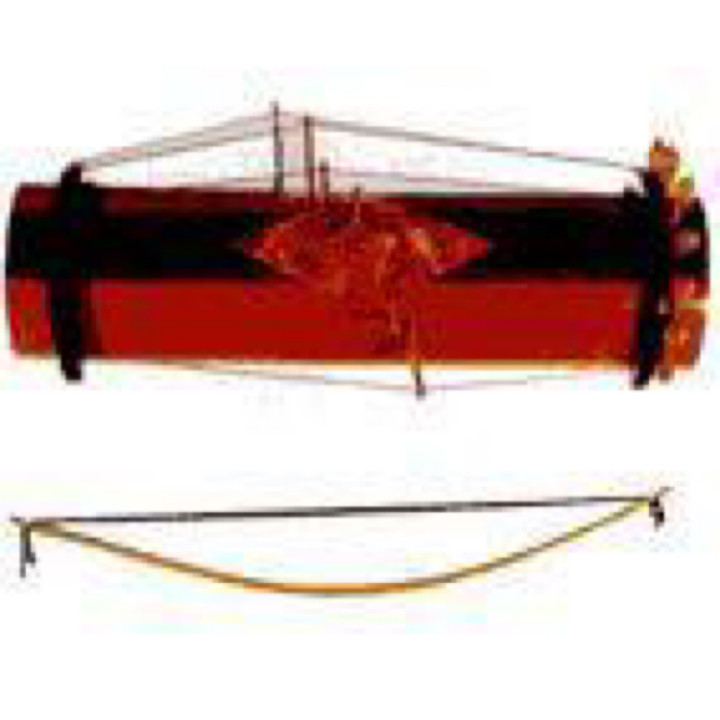Chenni's history
Chenni is a bowed and stringed musical instrument of the Zhuang people. With a long history, simple shape and soft sound, it is often used in solo or ensemble. It is popular in Donglan, Fengshan, Bama and other Zhuang mountainous areas in northwest Guangxi in Hechi area of Guangxi Zhuang Autonomous Region.

Chenni, with a long history, used to be called Zhuang lyre, waqin, Tang qin, Fuqin, Shenqin, etc. Most of these are based on the shape of the qin and attached to Han musical instruments, which is very inaccurate.
It must be distinguished from the lyre (guqin) of the Han nationality, and the word "Chenni" is not the meaning of the zither. It originated from the hometown of Donglan and Fengshan, and was born and raised in the northwestern mountainous area of Guangxi. It is an ancient folk stringed instrument unique to the Zhuang people.
Since the Zhuang people did not have written characters in ancient times, it is difficult to find detailed records of Tseng Ni in historical documents. Its origin and historical evolution can only be traced from folklore stories, modern local chronicles, folk songs and memories of old artists.
According to the "Fengshan County Chronicle": in the Song Dynasty, Fengcheng did have a chieftain surnamed Luo, and they were two brothers, one named Luo Shaoyuan and the other named Luo Shaoqian, who were well-known wealthy families. The local Zhuang family all call them toast heads, and many Fengshan folklore stories and songs that have been passed down to this day are closely related to these two chieftains. In Donglan County, it is said that in the early Ming Dynasty, when a magistrate came to office, local celebrities once organized a large-scale Tsingni band of 40 to 50 to cheer him up. Later, the magistrate erected a monument to commemorate his ostentation when he took office. , and engraved the list of celebrities and musicians who came to congratulate at that time on the stone tablet and placed it in front of the kitchen of the county magistrate's house. The county magistrate has been replaced, and it has been a long time, and no one knows the whereabouts of the stone tablet today.
In 1984, according to the recollection of Wei Liandeng (74 years old), an old Tini artist in Antao Village, Changjiang Township, Donglan County, his Tini playing skills were learned from his grandfather, and his grandfather passed it on to his grandfather. Seventy-one pieces of music, of which he only learned fifteen, and now only remembers eight. To sum up, Chenni appeared in the Song Dynasty and has a history of more than 900 years.
In the 400 years from the early Ming Dynasty to the Qianlong period of the Qing Dynasty, it was a period of development and prosperity. It was widely spread among the Zhuang people and was closely related to people's lives. The Donglan folk song "New Room Connected" sings: "The new room is connected, the front room is connected to the back room; the back room is woven with silk and satin, and the front room is Lachenne."
Since the 20th century, Chenni has been used less and less in the folk. By the 1950s, there were not many handed down, and only a few folk artists still survived, almost on the verge of disappearance.
In the early 1960s, the Guangxi Arts Institute and the cultural collection team of the autonomous region began to excavate it. Among the Zhuang people, there are many old people who can tell the legends and stories of Chenni, and young people who can sing the folk songs and ballads of Chenni, but they have never seen Chenni.
In the early 1980s, two musicians, Huang Zhongyu and Zhang Yingzhong, from the Song and Dance Troupe in Hechi, Guangxi, conducted in-depth research and reforms on Chenni. Afterwards, Mr. Kong Xianzhao of Guangxi Arts Institute also carried out fruitful reforms on Tsinni, so that Tsinni withered trees in the spring and gave out new green shoots. It can be predicted that in the near future, Chenni, a wonderful flower of ancient Zhuang music, will be more vivid and dazzling in the garden of music and art of the motherland.
 渝公网安备 50010702504639号
渝公网安备 50010702504639号